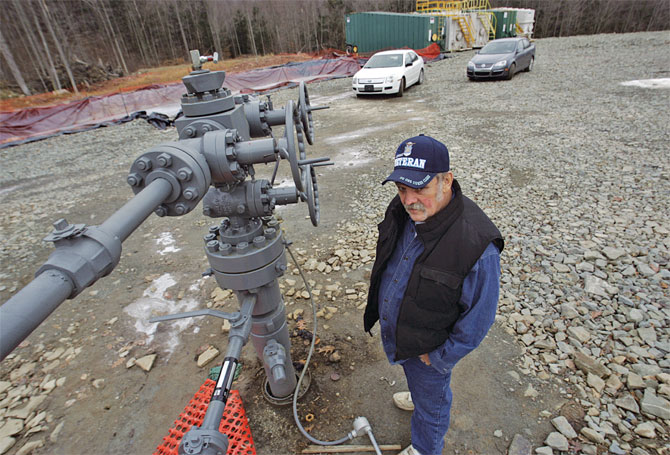
FYI.
This story is over 5 years old.
The Battle Of Lazy Dog Hill
In the air was a sound Ken Ely had become all too familiar with over the past year: the dull rumble of truck tires on the old two-lane that ran past the bottom of his 183 acres of bluestone and timber in this remote corner of northern Pennsylvania.
